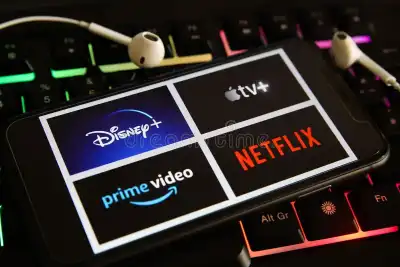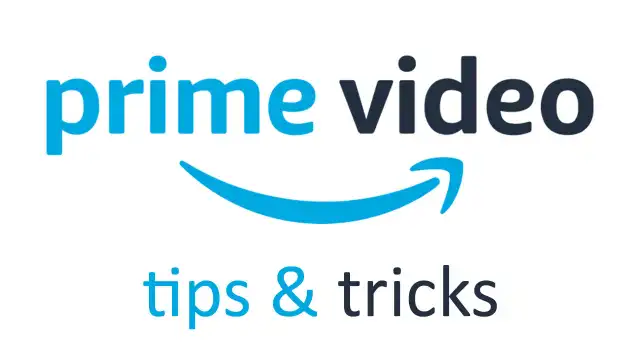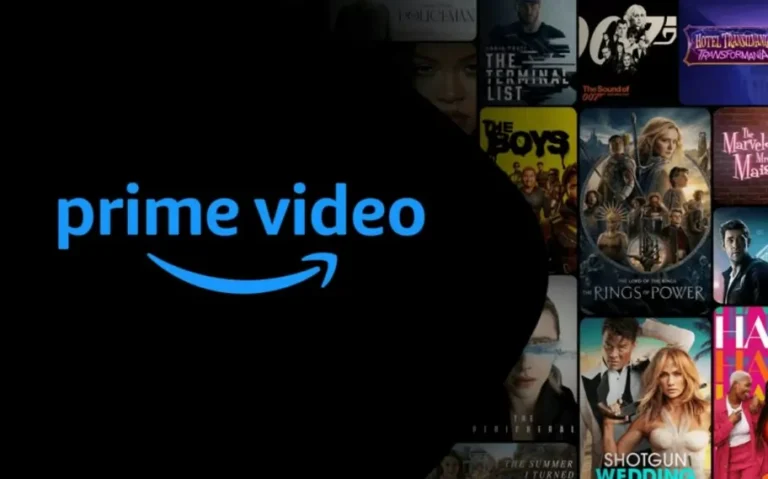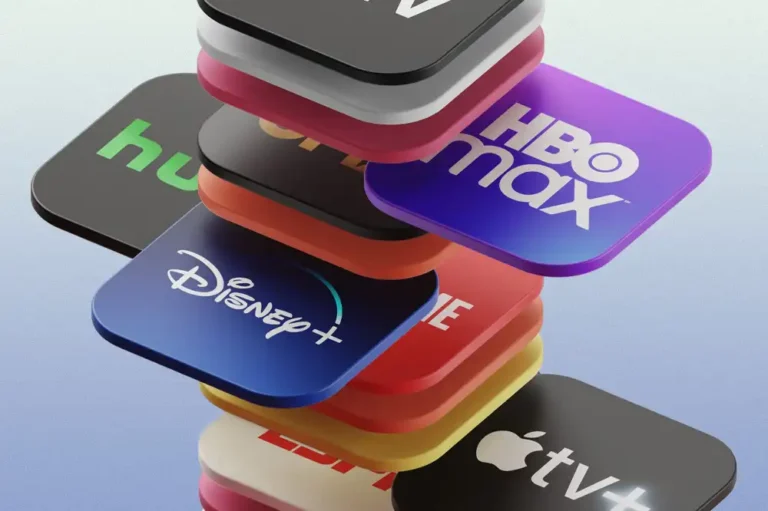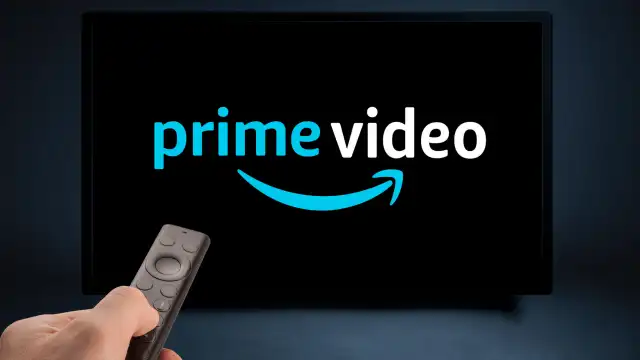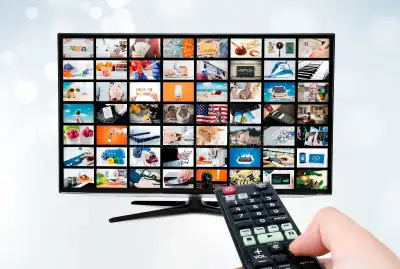It wasn’t all that long ago when most of us were glued to our living room TVs, waiting for our favorite shows to come on at a specific time. Watching television meant sticking to a schedule, dealing with commercial breaks, and maybe even recording episodes on a DVR if we couldn’t be home. Fast forward to today, and everything has changed. Thanks to streaming platforms like Netflix, Hulu, Amazon Prime Video, Disney+, and others, the entire experience of watching TV has been flipped on its head. We’re no longer tied to a set schedule, and we have more content at our fingertips than ever before.
Streaming services have sparked a major shift in the way we consume entertainment. Traditional television networks, which once ruled the industry, are now scrambling to keep up. As streaming continues to grow in popularity, it’s clear that this digital revolution is reshaping the future of television.
The Streaming Era: Total Control in the Hands of the Viewer
The biggest change streaming has brought is control—viewers now decide what to watch, when to watch it, and how much of it to consume at once. Want to binge-watch an entire season of a show in one weekend? Go for it. Want to pause an episode halfway through and pick it up days later? No problem. Whether you’re watching on a TV, laptop, phone, or tablet, streaming gives you flexibility that traditional TV never could.
This kind of convenience was unheard of in the cable TV era. Back then, you had to catch a show live or hope it was rerun. DVRs helped, but they still felt like a workaround. Now, people don’t just expect on-demand content—they demand it.
And it’s not just about convenience. Streaming has also changed the type of content people watch. Shorter episodes, docuseries, foreign shows, niche genres—you name it. There’s something for everyone, and people are exploring more than they ever could with cable.
The Downfall of Traditional TV
Cable and broadcast TV aren’t gone, but their grip on audiences is slipping. Ratings are falling, viewers are aging, and many younger people have never even subscribed to cable in the first place. It’s hard to compete with the sheer volume and variety of content available on streaming platforms.
One of the major reasons for this shift is original content. Streaming platforms aren’t just distributing old shows—they’re creating their own, and in many cases, they’re doing it better than traditional networks. Netflix’s Stranger Things, Hulu’s The Handmaid’s Tale, and Amazon Prime Video’s The Boys are just a few examples of hit shows that have drawn huge audiences and critical acclaim.
This content boom has made streaming services more than just an alternative—they’re now the main source of entertainment for millions of people. As more viewers shift away from cable, traditional TV networks are being forced to rethink their strategies. Many are launching their own streaming services, like NBC’s Peacock or CBS’s Paramount+, in an effort to stay relevant.
Ads Are Getting Smarter—And Fewer
One of the most noticeable differences between streaming and traditional TV is advertising. Cable TV is packed with commercial breaks, often interrupting shows every 10 minutes or so. Streaming, on the other hand, gives viewers more choice. Some platforms offer completely ad-free experiences (for a higher price), while others include fewer, more targeted ads.
Streaming ads tend to be shorter and more personalized. Because these platforms collect data on what viewers watch, how long they watch, and even when they pause or rewind, advertisers can better tailor their messages. For marketers, this level of precision is gold.
Meanwhile, traditional TV advertising is becoming less appealing. Without the same level of data, it’s harder to know who’s actually watching. As advertisers follow the audience, networks are seeing a decline in ad revenue and are trying to figure out new ways to keep money coming in.
Personalized Just for You
One of the most game-changing aspects of streaming is how personalized it is. When you log in to Netflix or Hulu, you’re greeted with recommendations based on your viewing history. Algorithms look at what you’ve watched, what you’ve rated, and even how long you watched something to predict what you might like next.
This kind of personalization makes the whole experience smoother and more engaging. It keeps people watching longer and helps them discover new favorites. In contrast, traditional TV relies on general programming schedules designed for a broad audience. There’s no real customization, so viewers don’t get that same sense of tailored entertainment.
Streaming platforms also experiment more with interactive content and niche genres. Whether you’re into anime, true crime, slow-paced dramas, or quirky comedies, there’s something curated just for you. That level of attention makes it easier for users to stay hooked.
The Shift in How Shows Are Released
Remember when we had to wait a whole week between episodes? Streaming changed that too. Netflix popularized the binge model—dropping an entire season at once—allowing viewers to watch at their own pace. While not every platform follows this model (Disney+ and HBO Max often release episodes weekly), the idea that viewers are in charge of how much they watch has taken root.
This shift has influenced how shows are written and structured. Writers know people might watch an entire season in one sitting, so stories are often more serialized, with cliffhangers that keep you pressing “Next Episode.” Compare that to traditional TV, where episodes often had to stand on their own in case viewers missed one.
Traditional TV Isn’t Dead—Yet
Despite the rise of streaming, traditional TV still has a role—especially for live events. Sports, award shows, news broadcasts, and reality competitions still draw big audiences when aired live. These kinds of events create a shared viewing experience that’s hard to replicate with on-demand content.
Plus, there are still plenty of people who prefer the simplicity of flipping through channels or having a cable package bundled with their internet. For some, traditional TV is familiar, reliable, and less overwhelming than navigating multiple streaming apps.
That said, the line between traditional and digital TV is getting blurrier every day. Most networks now offer their own streaming apps, and many cable providers are integrating streaming features into their services.
A Future Where Both Can Thrive
Rather than seeing streaming and traditional TV as competitors, it might be more accurate to see them as collaborators. Hybrid models are becoming more common, combining live TV with on-demand libraries. Services like Hulu + Live TV, YouTube TV, and Sling TV offer the best of both worlds—live channels with DVR and streaming functionality.
This approach allows networks to reach wider audiences and lets viewers tailor their entertainment experience. As streaming becomes more normalized and traditional networks adapt, the industry is moving toward a future where both forms coexist.
Conclusion: The Best of Both Worlds
Streaming services have completely transformed the way we interact with television. They’ve given us control, convenience, variety, and personalization that traditional TV never could. From binge-watching to algorithm-driven recommendations, streaming has redefined what it means to be a viewer.
But that doesn’t mean traditional TV is going away. Instead, it’s evolving—finding new ways to stay relevant in a world dominated by digital platforms. As these two worlds continue to overlap and influence each other, we’re likely to see more innovation, more hybrid services, and more options for viewers.
At the end of the day, it’s all about choice. Whether you’re catching the big game live on cable or diving into a new series on Netflix at 2 a.m., the way we watch TV has never been more flexible or more exciting. The future of television isn’t just digital—it’s dynamic, diverse, and designed for everyone.
